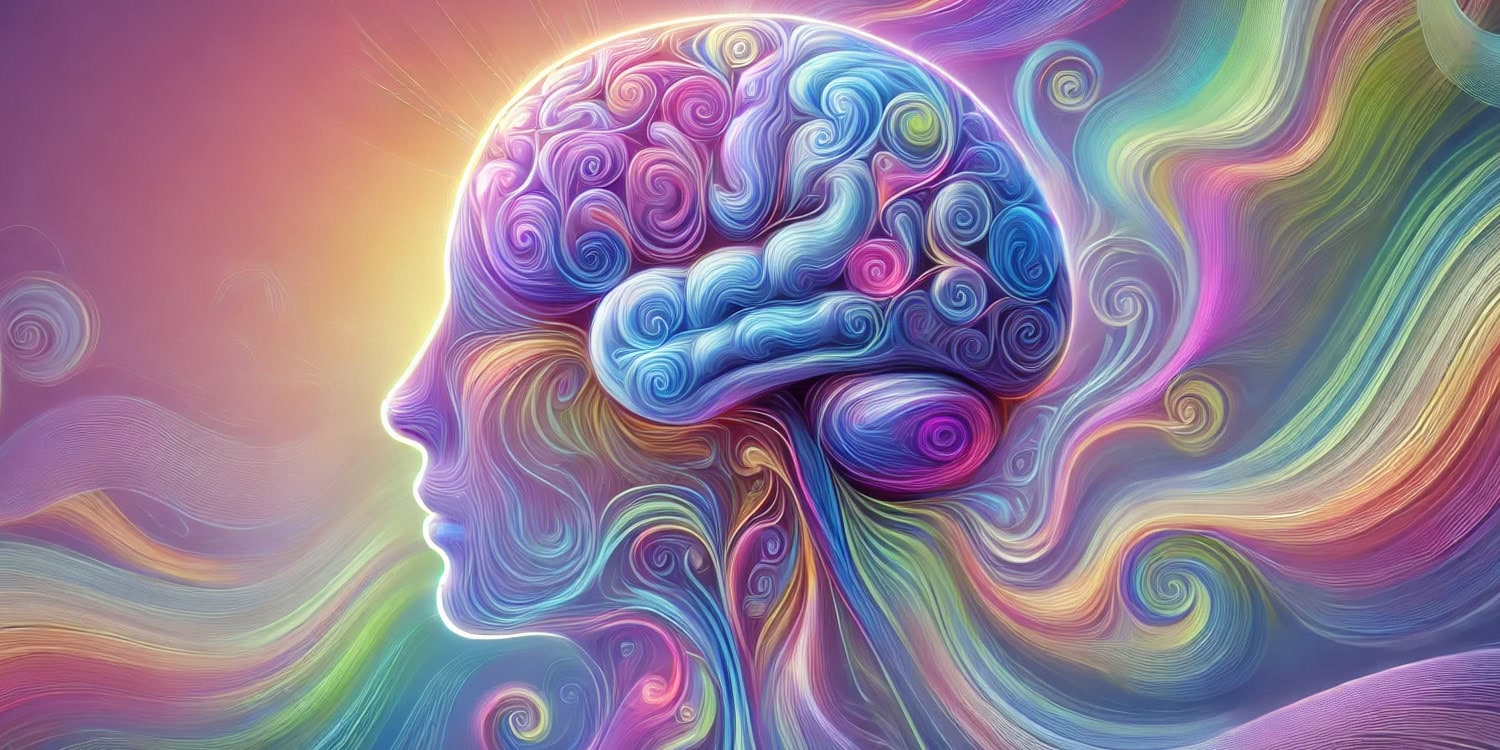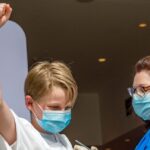A recent study published in the Journal of Psychopharmacology examined the effectiveness of psychedelic-assisted therapy on patients with treatment-resistant psychiatric disorders. Researchers found that therapy sessions involving psychedelics, specifically LSD or psilocybin, significantly improved depressive symptoms. Interestingly, the study revealed that patients who felt relaxed during their therapy sessions experienced the most pronounced antidepressant effects.
In Switzerland, psychedelic-assisted therapy is allowed for limited medical use, which provides a unique opportunity to study its effects in people with severe, treatment-resistant conditions such as depression and anxiety. Most existing studies have focused on whether certain aspects of the psychedelic experience, such as mystical or transformative moments, predict positive outcomes in mental health. These transformative experiences often include ego dissolution, in which the boundary between self and surroundings blurs.
However, some experts believe that other factors, like feeling relaxed or having a positive emotional experience during the session, may also contribute significantly to the therapeutic effects. Given this range of possibilities, the researchers aimed to use data from Switzerland’s program to identify which aspects of the psychedelic experience are most strongly linked to improvements in mental health.
“I am a depression researcher and am particularly excited about exploring new treatment methods and mechanisms. Additionally, as a psychiatrist in Switzerland, I have the unique opportunity to treat patients with psychedelics,” said study author Gregor Hasler, the principal investigator at the Molecular Psychiatry Lab at the University of Fribourg and author of Higher Self.
To conduct this study, researchers compared data from two groups: 28 patients undergoing psychedelic-assisted therapy in Switzerland and 28 healthy participants who were involved in a controlled clinical trial. The patient group included individuals with various treatment-resistant psychiatric conditions, such as depression and anxiety. These individuals had not found success with conventional treatments and were referred to psychedelic-assisted therapy by a psychiatrist or came on their own initiative.
The therapy sessions followed a well-defined process that began with preparatory consultations. Each patient met with their psychiatrist twice before the actual psychedelic session. During these preparatory meetings, the psychiatrist gathered a full psychiatric history, discussing current complaints and exploring the patient’s goals for therapy. The psychiatrist also provided information on both positive and negative effects that could arise from taking a psychedelic and talked about how any difficult parts of the experience might be managed.
On the day of the psychedelic-assisted therapy session, patients received their dose of either LSD or psilocybin in a quiet, comfortable room. They were encouraged to relax, wear eyeshades, and listen to a specially curated music playlist, which included periods of silence to allow space for reflection.
The psychiatrist was present throughout the session and occasionally led guided meditation when patients were receptive to it. Patients were allowed to bring books to read or to sit quietly, and after they took the psychedelic, they were asked to rate various aspects of their experience every hour. These ratings included the overall intensity of effects, positive or negative feelings, any sense of ego dissolution, and levels of relaxation.
In contrast, the healthy participants experienced psychedelic sessions in a clinical trial setting, where they were also given either LSD or psilocybin in a calm hospital room with an investigator present. Like the patients, the healthy participants rated their experiences, although they did not rate their level of relaxation. After a 24-hour observation period, they were allowed to go home. These real-time data collection methods for both groups helped researchers capture the unfolding psychedelic experience with an immediacy that retrospective evaluations can miss.
After the psychedelic sessions, the patient group attended follow-up integration sessions within 48 hours, during which they explored how their experiences could apply to daily life and mental health. Depression symptoms were measured before and after each psychedelic session using the Montgomery-Åsberg Depression Rating Scale, allowing researchers to track any immediate changes in mood or depressive symptoms.
The researchers observed a reduction in depression symptoms among patients, as indicated by lower scores on the Montgomery-Åsberg Depression Rating Scale after the therapy sessions. This improvement was not just an immediate effect but continued to be evident for an average of one week post-session. This suggests that psychedelic-assisted therapy may have rapid antidepressant effects that last beyond the session itself, offering hope for individuals who have not found relief through other treatments.
Interestingly, the study found that this improvement was not strongly linked to the typical hallmarks of a psychedelic experience, such as mystical insights or ego dissolution. Ego dissolution, which involves a sense of losing one’s boundaries and merging with the environment, is often regarded as a defining feature of the psychedelic state. However, compared to the healthy participants, patients undergoing therapy reported lower levels of ego dissolution.
“Previous studies found a connection between mystical experiences and antidepressant response, but we did not confirm this association,” Hasler told PsyPost.
The researchers proposed a few possible reasons for this. One explanation is that the patients, many of whom were on psychiatric medications, might have experienced less intense effects due to the long-term influence of these medications on brain function. Another possibility is that the therapeutic setting and mental health challenges led patients to maintain a more guarded experience, focused on self-control rather than surrendering to the psychedelic state.
The researchers found that one specific aspect—relaxation—was the strongest predictor of positive mental health outcomes for the patients. Those who felt relaxed during their therapy sessions showed the most significant reductions in depressive symptoms. This finding suggests that the quality of the therapeutic environment and the level of comfort and ease experienced by the patient may be critical to the success of the treatment.
“This study contributes to the ongoing discussion about the best approach to psychotherapy in conjunction with psychedelic therapy,” Hasler said. The findings suggest that “relaxation on the day of substance administration is a key factor for treatment success (antidepressant response) and is potentially modifiable. The study also shows that, under the right conditions and following safety protocols, naturalistic psychedelic treatments can be safe.”
The researchers proposed that relaxation might allow patients to engage more fully with their experience, providing a sense of safety that encourages emotional openness. In fact, the importance of relaxation in therapeutic settings has been documented in other types of therapy, and the study authors suggest that encouraging a state of calmness might help patients make the most of the psychedelic experience.
Although the results of this study are promising, there are a few limitations. The data were collected from a diverse group of patients, each with different mental health conditions, medications, and therapy session schedules. This diversity increases the study’s real-world relevance but also limits the ability to draw definitive conclusions about the exact effects of psychedelic-assisted therapy. Additionally, because the study was conducted in a naturalistic setting without randomization or a control group, it’s difficult to separate the effects of the psychedelic therapy from other aspects of the patient’s ongoing care.
“The study had a relatively small sample size, and as a naturalistic study, there was significant variability in the study population, as well as in the substances and dosages used,” Hasler said.
Future studies might benefit from including a larger and more controlled sample and examining whether stopping medications before psychedelic therapy would intensify or alter the effects. The researchers also suggest investigating ways to increase relaxation in therapy sessions, such as incorporating breathing exercises or meditation, to see if these techniques can amplify the therapy’s benefits.
The long-term goal is “to improve the safety and efficacy of psychedelic therapy,” Hasler explained. “Knowing that relaxation on the substance day is important allows us to monitor it and take measures to enhance relaxation, for example, through position adjustments, mindfulness interventions, and music.”
The study, “Naturalistic psychedelic therapy: The role of relaxation and subjective drug effects in antidepressant response,” was authored by Abigail E. Calder, Benjamin Rausch, Matthias E. Liechti, Friederike Holze, and Gregor Hasler




